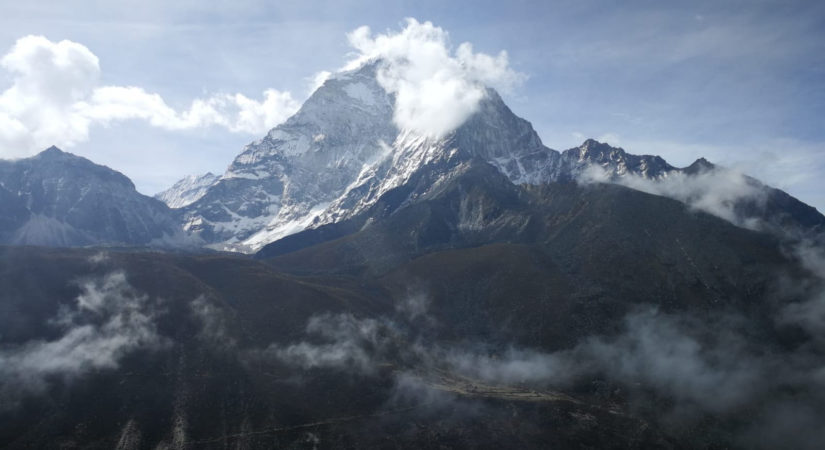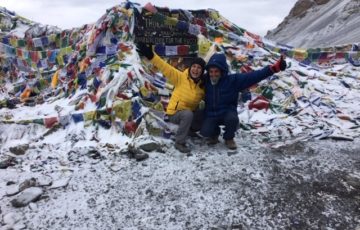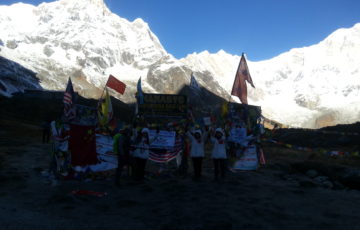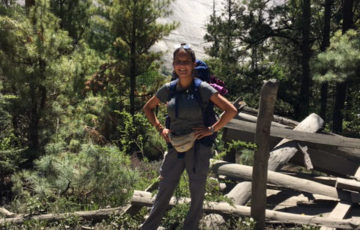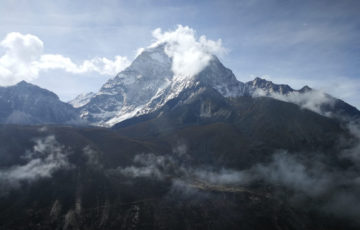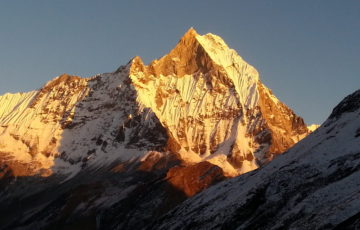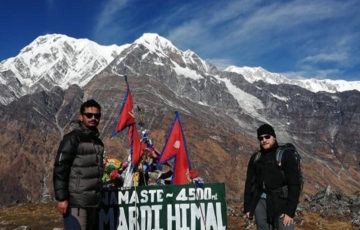Overview
Annapurna Sanctuary Trek is a very obtainable trek leading you from the beautiful lush green terraces of the Pokhara valley, through some really charming village communities up to Poon Hill. The Poon Hill vantage point offers exceptional views of the entire Annapurna Massif range, the Kali Gandaki Gorge . Because of At last Dhaulagiri summit also possible ABC Sanctuary Trek as well as panoramic views from Annapurna Sunrise Trekking. From there, your trek will drop into the attractive valleys that are home to many Gurung villages. Mt. Annapurna (8,091 M) is the 10th highest mountain in the world and the journey to its base camp is one of the most popular treks on earth. This trek also launches into Pokhara, widely known as the ‘Lake City’. Likewise Each day is well planned allowing sufficient acclimatization. chance for you to enjoy the dramatic scenery as it unfolds.
Annapurna Sanctuary Trek itinerary is sketched for the adventure who would like to trek to the base camp of Annapurna by passing through cascading waterfalls. And attractive villages, platform farmlands, abundant Rhododendron forests, and amazing mountain spectacle. Annapurna Sanctuary Treks The South Face is a logical route/way to the summit of Mt. Annapurna. However, for trekkers who prefer a shorter trek in the alternative route Annapurna Base camp – 12 Day is the best. Global Treks and Expedition furthermore have Annapurna Base Camp Trek – 14, Annapurna Base Camp Trek – 13 Days. If trekkers prefer long trek in the same route Annapurna Circuit Trek 21Days good.
Trip Outline
Day 01: Arrive at Kathmandu (1,350 M)
Day 02: Explore Kathmandu (B)
Day 03: Kathmandu to Pokhara tourist bus. (B)
Day 04: Drive Pokhara to Nayapul & Trek to Ulleri drive 2 hrs and trek 5 hrs (2,070 M) (B/L/D)
Day 05: Trek Ulleri (2,070 M) – Ghorepani (2,850 M / 4 -5 hrs) (B/L/D)
Day 06: Trek Ghorepani – Poon hill – Tadapani (2,660 M / 6 -7 hrs) (B/L/D)
Day 07: Trek Tadapani – Chhomrong (2,030 M / 5-6 hrs) (B/L/D)
Day 08: Trek Chhomrong – Himalaya (5-6 hrs) (B/L/D)
Day 09: Trek Himalaya – Machhapuchhre Base Camp (3,720 M/ 4-5 hrs) (B/L/D)
Day 10: Trek Machhapuchhre Base Camp – Annapurna base camp (4,130 M / 3-4 hrs) (B/L/D)
Day 11: Trek Annapurna Base Camp – Bamboo (2,300 M / 7-8 hrs) (B/L/D)
Day 12: Trek Bamboo – Jhinu Danda to downhill Hot spring back to Jhinu Danda (1,780 M / 6-7 hrs) (B/L/D)
Day 13: Trek Jhinu Danda – Ghandruk (1,940 M / 5 hrs) (B/L/D)
Day 14: Trek Ghandruk – Nayapul (1,050 M) & Drive to Pokhara 2 hrs walk & 1 hrs drive (B)
Day 15: Pokhara – Kathmandu drive-through tourist bus (6 -7 hrs ) (B)
Day 16: Leisure Day in Kathmandu (B)
Day 17: Final Departure (B)
What's included?
- Airport / Airport pick up & drop by private tourist vehicle.
- 2 N Hotel accommodation in Pokhara with B/B( Bed & Breakfast)
- All your standard mentions Meals during the trek (B-Breakfasts, L-Lunches, D- Dinners).
- Lodges/Guesthouses accommodation during the 7 Days trek
- Local GLOBAL TREKS English speaking guide
- National Park permits and TIMS permit for trekking.
- Private transportation entire this trek. ( Kathmandu-Pokhara-Nayapul-Pokhara-Kathmandu)
- Food, accommodation, salary, insurance and medicine for all staff.
- All our government taxes, vat, tourist service charges
- Official expenses.
What's not included?
- Lunch /Dinner whilst in Pokhara & Kathmandu.
- Travel insurance which covers emergency Rescue and Evacuation.
- Alcoholic, hot and cold drinks.
- Personal trekking Equipment (See the trekking equipment page).
- Tips for trekking staff and driver (Tipping is expected).
- Any others expenses which are not mentioned on ‘Price Includes’ section.
Essential Information
The following gives you a general idea of the personal items that you can bring for the trek. The personal items as your individual interest, and choice. In a supported trek, heavy items are carried by porters or yaks and personal belongings that you may need for the day like money, camera, sun cream, water bottle, rain gear, and toilet paper etc. should be carried by you. So you are briefed to pack items in two different bags.Due to The most important fact that one should keep on mind is that one should have enough clothes to tackle the cold weather in the mountain range.
(Note: We will supply complimentary water and wind proof duffel bag which you can use on the trek and is carried by porter/s. The duffel bag is yours to keep after the trek. You can leave your bag with your non-trek items at the hotel in Kathmandu and collect them after the trek)
Similarly Upper Body – Head / Ears / Eyes
Shade hat or baseball cap – of their head and then put a baseball cap on to hold it in place. This can be a flexible alternative while keeping the sun off your ears and neck.
Warm wool or synthetic hat that covers your ears
Glacier glasses-100% UV protection with side shields and a hard-sided storage case (i.e. Julbo or Cebe). Regular sunglasses are not sufficient. If you wear prescription glasses, speak to your doctor about prescription glacier glasses, perhaps with transitional lenses. This is to protect your eyes from the rays of the sun due to the thinner atmosphere which can cause a painful condition known as snow blindness.
A neck warmer is another piece of gear for extra warmth if you feel you will need it.
Headlamp – Black Diamond and Petzl both make several good ones. Make sure to bring extra batteries and that they are lithium batteries so that they will last in the colder temperatures. These are indispensable for getting around at night, reading, etc.
Balaclava – lightweight, thinner variety
Some people like ear-muffs; these are optional; a good hat, balaclava, and hooded jacket should really be sufficient, but this is a personal choice for some people.
Hand
1 pair liner gloves, thin wool or synthetic, useful alone a days or as a layer inside other gloves/mitts for additional warmth.
1 pair warm gloves (heavier fleece or wool).
1 pair shell gloves or mitts; Gore-Tex is preferred for keeping hands dry.
Instant hand warmers are always nice in a pinch, but really shouldn’t be necessary on the trek. Bringing appropriate hand protection as recommended above should be sufficient (optional).
Core Body
T-shirts (2/3)
Light and expedition weight thermal tops.
Fleece jacket or pullover.
Fleece Wind-Stopper jacket (optional).
Waterproof (preferably breathable fabric) shell jacket.
2 women sports bras, Synthetic, no cotton!
Lower Body – Legs
2 pairs nylon hiking shorts – Quick drying type, not cotton!
Underwear, stay away from cotton. (4/5)
1 pair soft shell pants – synthetic, full zip from top and bottom preferable.
2 pairs of trekking pants, the knees so they double as shorts.
1 pair hard shell pants. Waterproof/breathable, Gore-Tex or equivalent is best. Should zip from the top and bottom – this makes it easier to put on over boots without getting undressed should the weather change once you are underway for the day.
1 pair of cotton pants (loose jeans/khakis).
2 pairs of lightweight long underwear – Capilene or other synthetic.
All clothing should be kept dry using waterproof stuff sacks or large puncture resistant plastic bags.
Feet
4/5 pairs of liner socks, synthetic or capilene.
3/4 pairs heavy weight socks to be worn over liner socks.
1 pair light weight socks, a good option for the lower / warmer parts of the treks.
1 pair light to medium weight water proof hiking/trekking boots.
1 pair light trekking shoes or sneakers. Good for around the camp/lodges and in Kathmandu.
1 pair hiking gaiters, good for keeping dust and rocks out of your shoes/boots as well as keep your feet dry as necessary (Optional).
1 pair sandals (Optional).
Likewise Medicines and First Aid Kits
(Please note WT guide will also carry the first aid kit bag during the trek. However, we still recommend you to bring your personal first aid kit as well)
Extra Strength Excedrin for altitude related headaches.
Buprofen for general aches and pains.
Imodium or Pepto Bismol capsules for upset stomach or diarrhoea.
Diam ox (commonly prescribed as Acetazolamide) 125 or 250 MG tablets for altitude sickness. Please discuss with us before starting to take this medicine.
1 small personal sized first-aid kit with blister treatments such as moleskin, band-aids, some waterproof tape, anti-infection ointments, etc. your guides will have more extensive medical gear, but you should have the basics for general use.
Most Necessary Documents/Materials
Passport and extra passport photos (4 copies).
Airline ticket (Please make a copy and leave on at our office in KTM just in case if you need to change the date of your).
Durable wallet/pouch for travel documents, money & passport.
Lip balm. At least SPF 20, 2 sticks. A string taped to the stick is helpful, to hang around your neck and some are now being sold with a cord already attached. Handy as it avoids you from having to stop and look for it.
Sunscreen. SPF 40 is recommended and should be relatively new since it loses its’ effectiveness over time.
Pocket knife or small Swiss Army type.
Water purification Iodine tablets or Polar-pure crystals.
Toiletry kit. Be sure to include toilet paper stored in a plastic bag, hand wipes, and liquid hand sanitizer, towel, soap, etc.
2 bandanas.
Optional
1 pair adjustable trekking poles. Although these are listed as optional, these can be of great assistance to people who may think of themselves and generally clumsy or with bad knees, ankles, etc, especially when going downhill (Optional).
Binoculars (Optional).
Favorite snack foods, no more than 2 pounds (Optional).
Paperback books, cards, mp3 player (there are a couple of stops where you could recharge. Avoid players with moving hardware as it may not function. Remember, keep these items lightweight) (Optional).
Hydration bladder with a drinking tube and tube insulator (Optional).
A pee bottle for men and pee funnel for a woman, some swear by them to avoid that chilly late night trip (Optional).
1 small stainless steel thermos (Optional).
1 lightweight point & shoot camera or 1 large SLR. Digital cameras are ok, but you must keep the batteries warm when not in use (Optional).
Please Note: Tight fitting, figure-hugging clothing, such as those made with Lycra can often be offensive to locals, especially to women. If you find these items comfortable as a base layer, please pack something to wear on top of them.
Above This list is only a guideline. While you are required to bring everything on this list, there are numerous options, brands, and versions of each piece of equipment. Please Use your experience and the listed features to find the best gear for you. Some of the above equipment can be easily found in stores in Kathmandu for cheaper prices.
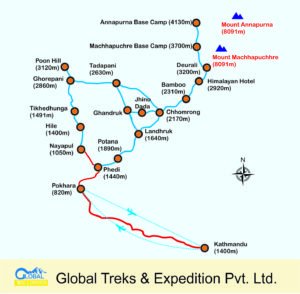
Price Starts
US $1035
$ 1105
Free Cancellation
Hassle-Free Booking
Best Price Guarantee

